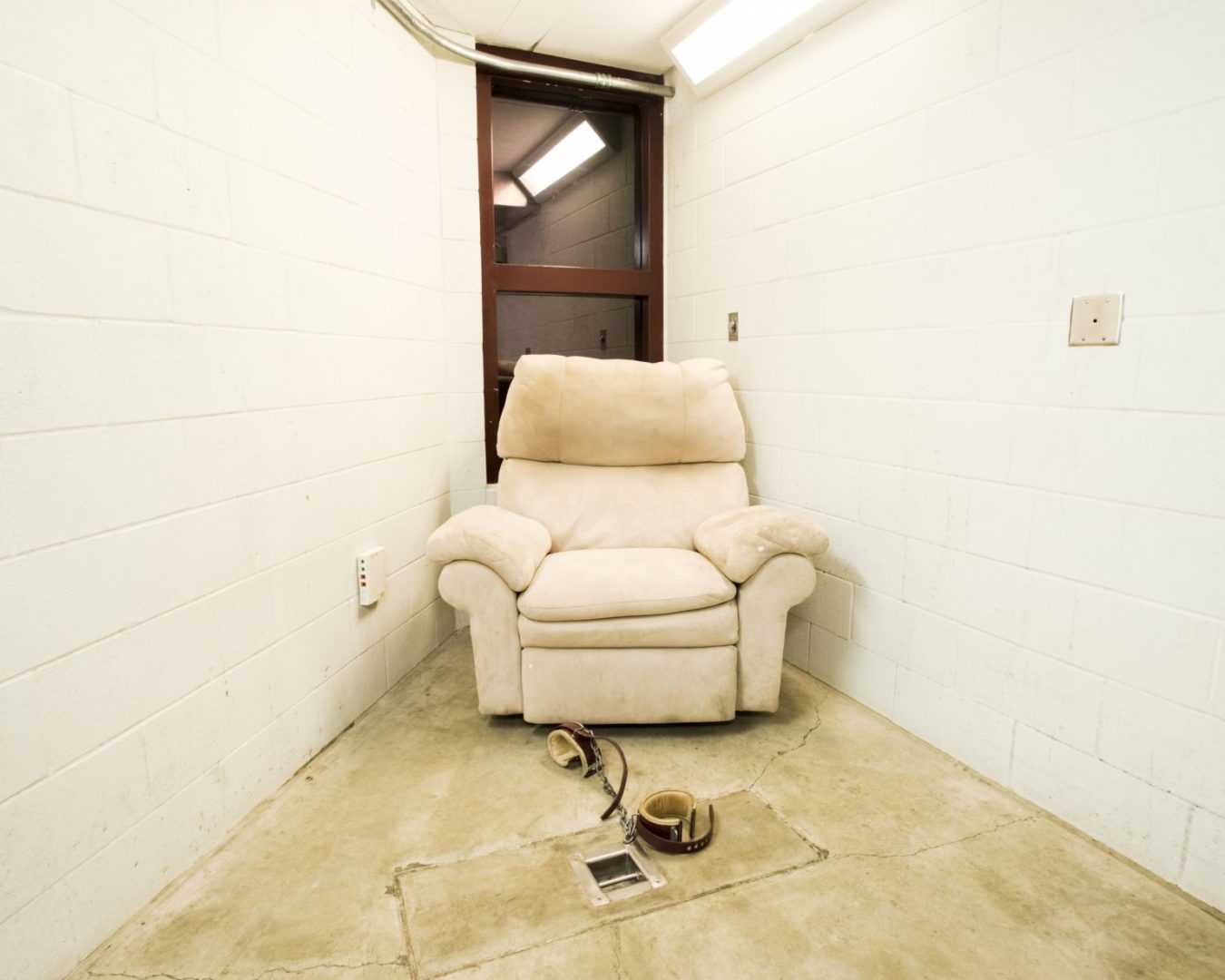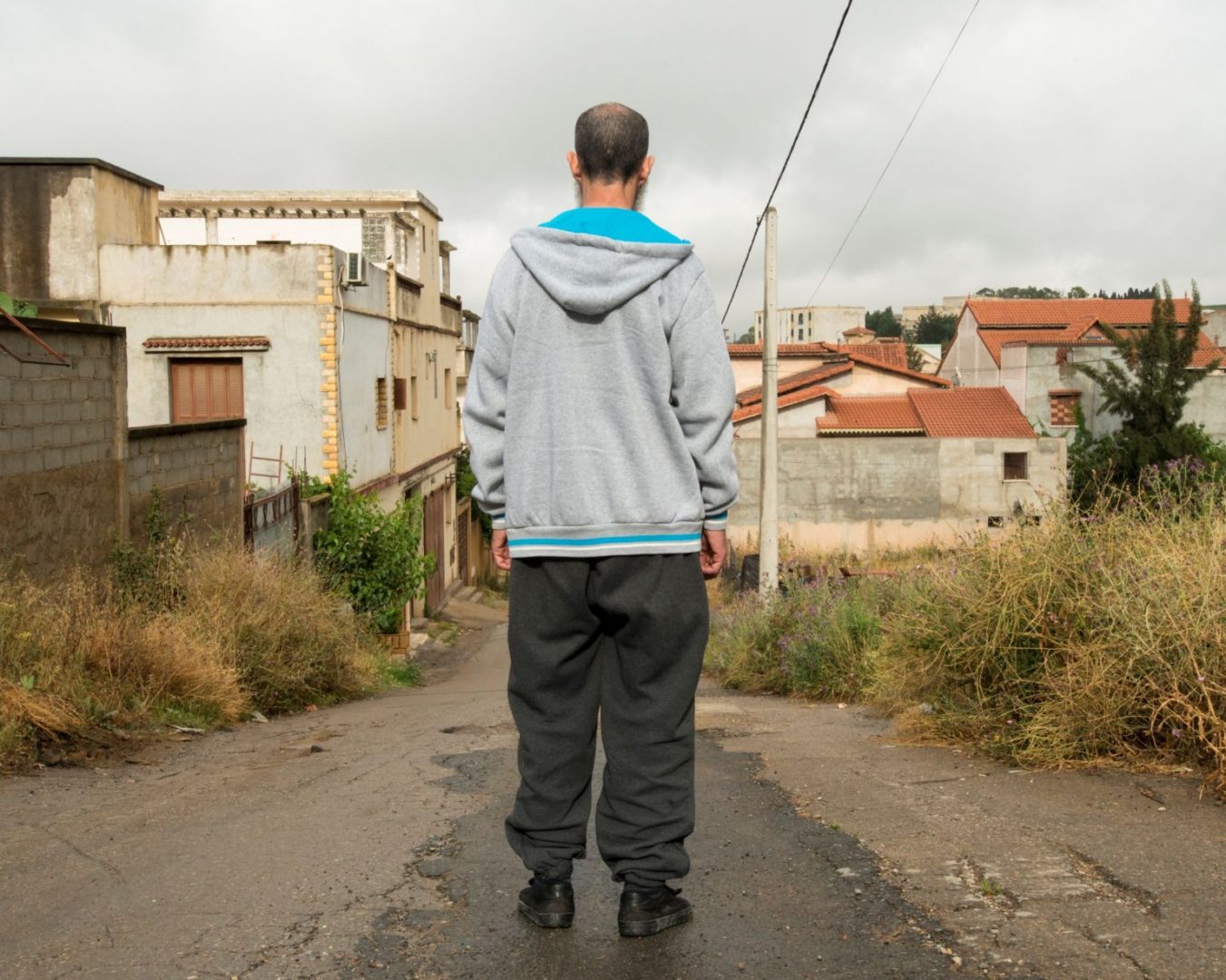
March 18, 2020
by Pete Brook
“Over the past 15 years, most Americans have stopped looking,” Cornwall says. “Though the detention centers of Guantánamo Bay were initially established in the name of our safety following 9/11, few Americans now believe the offshore prisons have anything to do with them.” [1]
We have to start looking. Again.
Since opening in January 2002, GTMO has held 780 men. At the time of writing, 40 men remain imprisoned. Hundreds were released without charge after languishing for years. Hundreds more were released to third-party nations. A few were involved in prisoner swaps. Those who remain are in permanent legal limbo, outside of normal U.S. legal due process and subject to Kafkaesque military commissions. For them, the only plan is indefinite detention. Even when shocking facts came to light (“We tortured some folks,” President Obama said in 2014) [2], the knowledge of past American abuses haven’t been enough to halt abuses of the present. GTMO remains operational.
Might Cornwall’s images, in conjunction with other activist, journalist and lawyerly work, tip the scales? We have to hope so. In them, we must located our present. As critic Alan Trachtenberg once wrote, “what empowers an image to represent history is not just what it shows, but the struggle for meaning we undergo before it.” [3]
Welcome To Camp America breaks down into three distinguishable types of images. The first photographs Cornwall made, over three trips to Guantánamo Bay, are shots of the prison and of civilian and entertainment spaces maintained by the U.S. military. Second, are studio shots of souvenirs bought at the Naval Station GTMO gift store. Third, are portraits of former prisoners in countries to which they’ve been relocated.
The motto of GTMO, “Safe, Legal, Humane and Transparent,” is Orwellian doublespeak. GTMO is none of these, least of all transparent. The Joint Task Force (JTF) that administers GTMO employs strict controls of what can and can’t be photographed.

“No frontal views, profiles, three-quarter views, or any view revealing a detainee’s identity,” recounts Cornwall. “Nor any faces of military personnel or civilian staff. No deliberate images of security protocols, infrastructure, communications facilities or certain stretches of coastline. No panoramic views of the detention facility camps or the military commission buildings that would reveal the layout of structures and access roads. No photographs unless accompanied by a military escort.”
When we view Cornwall’s documentary images of GTMO, we must be skeptical. When we see an arrow painted on a cell floor, or when we see the standard issue of jailhouse clothes and belongings, we might be fooled into thinking we’re seeing which way is east, or that an inmate has basic needs met. But without a horizon and without a human in the frame, what can we see and know?
Vision itself is destabilized—Cornwall shows us doors with signs that let us know we can go no further; bleachers that hold no spectators; spaces where the only eyes belong to a smirking plastic pool monster; a cell mirror that is a warped sheet of solid metal offering a warped reflection; the bowling alley that is rigged with CCTV but empty of people at play. In one of the only images with humans, three soldiers look out to sea, standing like mannequins with their backs to the camera. Cornwall’s photos of GTMO are as obscure as the restrictions she faced.

The only time Cornwall was allowed to photograph prisoners was through one-way mirrored glass. At that time, the accompanying JTF officer provided black tape to prevent the trigger of the auto-flash on her camera – the flash would have alerted prisoners to their being photographed.
Every photographer at GTMO takes a guided tour of “staged sets” that are, essentially, in service to “photo ops.” Instead of extolling a celebrity or political figure, these photo ops foster the bloodless image of GTMO (padded interrogation room armchair) and promote the “humane” personality of the prison (torture-less images of force-feeding torture apparatus).
Outside of the prison walls, images of the civilian spaces on base are banal. Here, Cornwall’s juxtaposition of her second type of images – cheap consumer goods such as a camouflage beer cozy and “I LOVE GTMO” lip balm from the GTMO gift store – point directly at our collective disconnect between tax-funded war and everyday life full of crap objects. Prisoners are subject to solitary confinement in perpetuity, while non-prisoners in Guantánamo Bay are subject to the perpetual offer of tawdry consumables.


Every image with which Cornwall left Guantánamo was permitted following Operational Security Review (OPSEC), a process in which a JTF officer reviews and signs off on each individual digital file. Cornwall’s images, if we look closely enough, reveal the game in which she was involved. She is a fierce critic of Guantánamo. As viewers, we must absorb our pacification on the issue of GTMO and go with Cornwall out into the world, to Albania, Algeria, Egypt, England, France, Germany, Ireland, Qatar and Slovakia to meet the former prisoners in her third type of images.
The former prisoners are given only first names—Djamel, Hussein, Mourad, Murat, Hamza, and others. They look away from us. Cornwall’s deliberate design decision maintains our undeniable distance from them and refuses the common and easy response of audiences to pin sympathy on a face and move on. Instead, our attention turns to the mostly forlorn landscapes in which they stand. Accompanying text details how long each was imprisoned at GTMO, their release date and the country to which they were sent. Many former prisoners live in places where they do not know the language (Chinese Uighurs, for example, were relocated to Albania). They’re solitary beings with no support system. The U.S. has washed its hands of them. Some are monitored, so that they exist, essentially, in open-air prisons.

In the summer of 2015, Slovakian Special Forces broke down the door of Hamza, shot him with rubber bullets and arrested him. Their reason? He had not left his apartment in five days. Just as GTMO distilled America’s own racism and cruelty, the prison has also exported its despair and pain.
Cornwall’s portraits are a gaze into the fog of the present and err toward an indeterminate future poisoned by a system that dehumanizes… and persists.
Cornwall did not, could not, deliver an exposé of Guantánamo. Welcome to Camp America doesn’t reveal truth about GTMO per se, but reveals a broader truth about the imperialist logic that braces the prison and controls seeing.
Cornwall’s images are so different from those of pocked landscapes, American coffins, pulped bodies, drone feeds, tracer fire, Abu Ghraib and beheading videos, it is easy to forget that they are war images.
“The whole notion of a conventional military ‘war on terror’ is,” media theorist W.J.T Mitchell asserted, “quite incoherent, confusing one kind of war with another. It is the sort of asymmetrical warfare that is doomed, not just to failure, but to actually strengthening the enemy against which it is waged.” [4]

With 9/11, Al-Qaeda proposed a borderless, limitless conflict. Bush, Cheney, and Rumsfeld were lured and responded with massive ordinance, lawless rendition, violations of the Geneva Convention and GTMO, a stateless prison. U.S. military incursions in Iraq and Afghanistan have killed more than a million people.
“A state which has security as its sole task and source of legitimacy is a fragile organism,” wrote cultural theorist Giorgio Agamben in the wake of 9/11. “It can always be provoked by terrorism to become itself terroristic.” [5]
In the rush to declare a “war on terror” and to open Guantánamo outside of international law and as the receiving point for rendition, the American psyche was perverted. GTMO has been a sixteen-year grope for security at the expense of any claims to moral high ground or legitimate jurisprudence.
Guantánamo is the most sterile and locked-down space of the ongoing and blood-soaked “global war on terror.” Cornwall’s studies of gift shop items and the portraits and testimonies of former prisoners are the context for the prison shots. And vice versa. Souvenirs of a place that so uniquely broke with U.S. and international law are a sick joke, especially when set alongside the “free,” damaged and abandoned ex-prisoners.
GTMO is an American blind spot. Cornwall’s photographs help us see its edges and offer us a way back into a conversation we have seemingly abandoned. The images of Welcome to Camp America ask us to struggle for meaning and establish a truth for them by diligently seeing. The meanings of these images are the ones we make together. And then may we act.
[1] Debi Cornwall, Welcome to Camp America (Radius Books, 2017).
[2] Paul Lewis, “Obama Admits CIA ‘Tortured Some Folks’ but Stands by Brennan Over Spying,” The Guardian (August 1, 2014)
[3] Alan Trachtenberg, Reading American Photographs: Images As History-Mathew Brady to Walker Evans (Macmillan, 1990) at xvii.
[4] W.J.T. Mitchell, “The Unspeakable and the Unimaginable,” Cloning Terror – The War of Images, 9/11 to the Present (University of Chicago Press, 2011), at pp. 55–68.
[5] Giorgio Agamben, “On Security and Terror,” Frankfurter Allgemeine Zeitung, September 20, 2001. (Translated by Soenke Zehle.)
Pete Brook is a writer, curator, and editor focused on prisons, photos, and power. His work has been featured by ACLU, The British Journal of Photography, The Los Angeles Times and The New York Times. Pete has curated half-a-dozen exhibitions, most recently Prison Obscura (2014 – 2016). His writing has been published by Aperture, The Atlantic, Huck, ICP, The Marshall Project, PDN, Polka, Time, Truthout and Wired. Find Pete’s archive at www.prisonphotography.org.